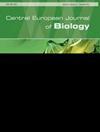Multi-Mode Assessment Approach on Anti-Cancer Potency of Vanadium on Breast Cancer Cells
引用次数: 1
Abstract
DOI: 10.26650/EurJBiol.2018.18007 Objective: The anti-cancer activities of vanadium and its compounds have been widely investigated in cancer research recently. This is mainly attributed to vanadium and its compounds’ near ideal properties for being an anti-cancer agent. Most of the current classical chemotherapeutics used in cancer therapy are known to bring numerous strong side effects. Thus, there is a need to discover new drugs which have mild or no side effects and which are effective in low doses. For the treatment of breast cancer (a disease with a difficult and costly treatment process, high mortality, and which is especially prevalent in woman), novel drugs and approaches are required. With this in mind, this study investigates the potential therapeutic efficacies of vanadyl sulphate, a member of the vanadium compounds with ideal anti-cancer properties such as cytotoxicity, antiproliferative and proapoptotic activities on human breast adenocarcinoma cells (MCF-7) including morphological and ultrastructural changes. Materials and Methods: A MTT colorimetric assay was used for cell viability assessment. Morphological and ultrastructural changes were evaluated using confocal and transmission electron microscopy methods, respectively. The apoptosis stimulating property of vanadyl sulphate was tested under a flow cytometry. And also, cell cycle and proliferation inhibitory effects were examined using the immunohistochemistry technique.钒对乳腺癌细胞抗癌效能的多模式评价方法
目的:钒及其化合物的抗癌活性近年来在癌症研究中得到了广泛的研究。这主要是由于钒及其化合物作为抗癌剂具有接近理想的特性。众所周知,目前用于癌症治疗的大多数经典化疗药物都会带来许多强烈的副作用。因此,有必要发现副作用轻微或无副作用、低剂量有效的新药。乳腺癌是一种治疗困难、费用昂贵、死亡率高的疾病,在妇女中尤为普遍,因此需要新的药物和方法。考虑到这一点,本研究探讨了硫酸钒的潜在治疗作用,硫酸钒是钒化合物的一种成员,具有理想的抗癌特性,如细胞毒性、抗增殖和促凋亡活性,包括形态学和超微结构的改变。材料与方法:采用MTT比色法测定细胞活力。分别用共聚焦和透射电镜观察形态学和超微结构的变化。流式细胞术检测硫酸钒酯对细胞凋亡的刺激作用。并用免疫组化技术检测细胞周期和增殖抑制作用。
本文章由计算机程序翻译,如有差异,请以英文原文为准。
求助全文
约1分钟内获得全文
求助全文

 求助内容:
求助内容: 应助结果提醒方式:
应助结果提醒方式:


